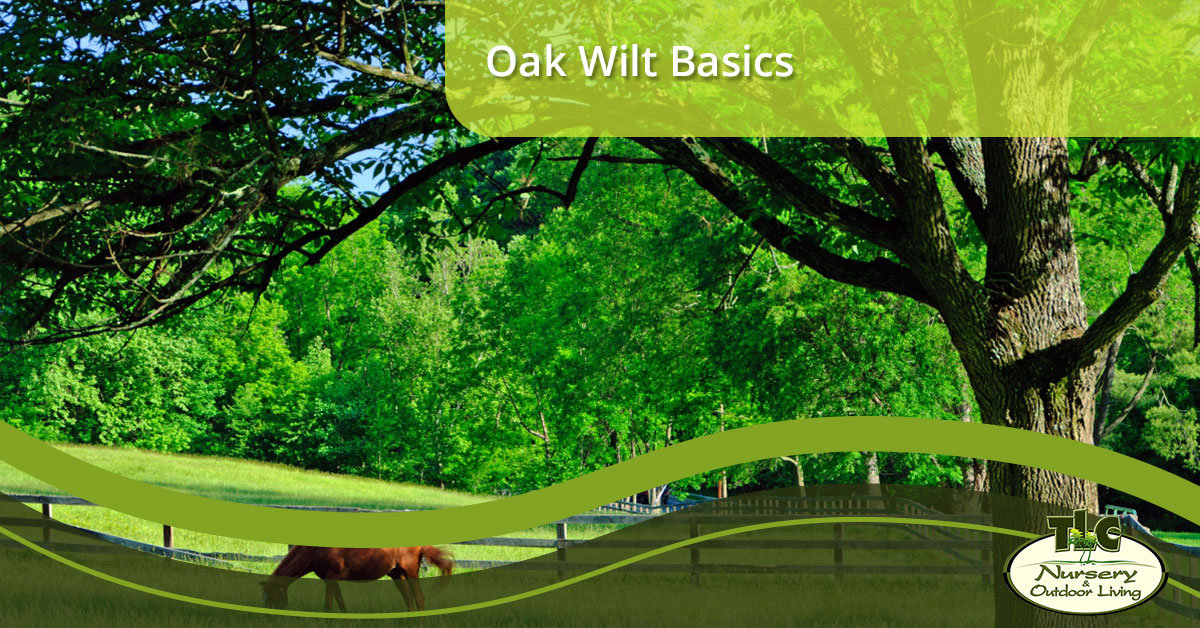Trees are an important part of the environment everywhere. Here in Kansas, we depend on their cooling shade and protection from the bitter north winds in the winter. Here at TLC Nursery & Outdoor living, we love trees! Yes, it’s true that we build our reputation on lawn care, but trees are an important part of any landscape and our garden center always carries a wide variety of hardy trees. Our resident arborist is dedicated to helping you maintain the health of your trees. In our last article, we looked at the invasive pest, the Emerald Ash Borer. If you haven’t read it, you can here. In this week’s article, we’ll look at another, less prevalent but destructive problem in keeping trees healthy.
 The weather in Kansas is very extreme. We have summers that are hot and often dry. Days, where the mercury reaches 100 degrees, are far from unheard of, yet still remarkable. The humidity often reaches levels that could be described as smothering with levels in the 80% region in the morning and going down as the day gets hotter. It is common for molds and fungus to take hold in these warm, damp conditions. When it comes to trees this means that it is important to keep an eye out for signs of these growths. One particular fungus that is especially destructive to oak trees is oak wilt. In this week’s article, we’ll look at oak wilt, its signs, and treatments. If you see some damage to an oak tree, be sure to call TLC Nursery & Outdoor Living. We
The weather in Kansas is very extreme. We have summers that are hot and often dry. Days, where the mercury reaches 100 degrees, are far from unheard of, yet still remarkable. The humidity often reaches levels that could be described as smothering with levels in the 80% region in the morning and going down as the day gets hotter. It is common for molds and fungus to take hold in these warm, damp conditions. When it comes to trees this means that it is important to keep an eye out for signs of these growths. One particular fungus that is especially destructive to oak trees is oak wilt. In this week’s article, we’ll look at oak wilt, its signs, and treatments. If you see some damage to an oak tree, be sure to call TLC Nursery & Outdoor Living. We
Oak Wilt
Oak wilt is a fungal disease that affects all species of oaks and is caused by the fungus Ceratocystis fagacearum. The symptoms include leaves turning light green or brown in the middle of the summer, beginning at the outer limits of the leaf and moving inward. The leaves will curl up, and the center vein of the leaf will turn golden. Then the leaves fall off. This fast moving fungus can clear the top of an oak tree canopy in just a few week and in one season, the tree will be killed. Red oaks are more susceptible than oak in the red oak family, but all species can be killed. The fungus can travel from one tree to another via their common root system, and this is the reason pockets of oaks are usually affected.
Geographic Distribution
Oak wilt is found in 21 states, and while it is not prevalent in the Independence area, it is found all over Missouri, Arkansas, and in eastern Oklahoma.
Treatment and Control
The fungus is carried by the oak bark beetle, so control of this beetle is an important step in controlling the fungus. Acting quickly to remove affected branches can save a tree. If fungal mats, or collections of fungus that the beetles crawl through, are present, the tree needs to be cut down and wood burned.
If you suspect that your oak tree has been infected with Oak wilt or any other tree disease, call TLC Nursery & Outdoor Living and make an appointment with our certified arborist. Or stop by our garden center and talk to one of our knowledgeable staff members.


